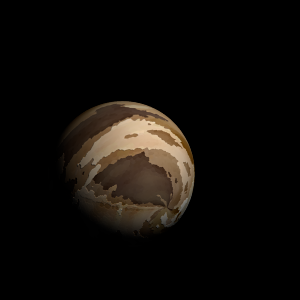|
|
Space Astro
|
Info for exoplanet "Cacanere'nome"
| Scientific (actual) data |
|---|
| Name | TOI-558 b |
| Planet status | Confirmed |
| Planet mass | 3.61 |
| Radius | 1.086 |
| Orbital period | 14.5741 |
| Semi major axis | 0.1291 |
| Orbit eccentricity | 0.298 |
| Inclination | 86.24 |
| Discovered | 2021 |
| Updated | 2025-09-25 |
| Omega | 132.3 |
| Impact parameter | 0.907 |
| K | 257.1 |
| Temperature (kelvin) | 1061 |
| Publication | Published in a refereed paper |
| Detection type | Primary Transit |
| Mass measurement type | Radial Velocity |
| Radius measurement type | Primary Transit |
| Star name | TOI-558 |
| Right ascension | 42.29° |
| Declination | -58.02° |
| Mag v | 11.3 |
| Star distance | 401 |
| Star metallicity | -0.004 |
| Star mass | 1.349 |
| Star radius | 1.496 |
| Star sp type | F5IV-V |
| Star age | 1.79 |
| Star temperature | 6466 |
| Wikipedia article | TOI-558 b |
Back
| |
| Fictional info (?) |
|---|
| Suggested name | Cacanere'nome |
| Planet type | Terrestrial |
| It may have had carbon dioxide oceans in the past, but these would have vaporized as the temperature rose due to a runaway greenhouse effect. |
| Atmosphere | Ozone | 74% |
| Molecular hydrogen | 15% |
| Carbon dioxide | 6.1% |
| Neon | 4.4% |
| Atmospheric pressure | 40 bar |
 |
| No known satellites |
| Google search for Cacanere'nome |
|
Website by Joachim Michaelis
|
|
|
|